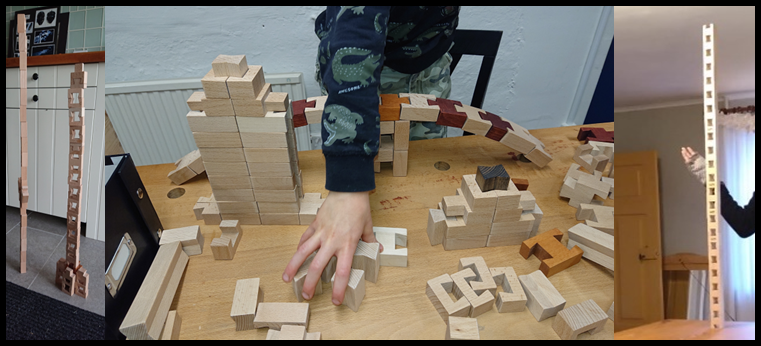
3. Stacking Buildning Blocks
Share
Age: Works for all ages.
Examples abilities that are trained
- GROSS AND FINE MOTOR SKILLS
- BALANCE
- ASSESSING DISTANCE
- COORDINATION, HAND-EYE
- CONCENTRATION AND PATIENCE
Pedagogical thoughts and challenges in the child's learning
Stacking blocks is an introductory exercise for understanding physics and mathematics.
- Building and demolishing develops the child's knowledge of balance and cause/effect.
- You can investigate geometric shapes and you can count blocks.
- Why did the stack collapse? Practice solving problems by talking, trying, and trying again.
- The child gets to practice judging distance and force as it puts blocks in a stack. This provides a pre-understanding and develops spatial awareness.
- When blocks fall on the floor or hit each other, different sounds occur, which gives rise to discovery and experimentation.
Stacking blocks is an exercise for language development and body image.
- Together with the child we practice words for different concepts, words for placement and location. The red brick is over the green...
- Gross and fine motor skills are trained by lifting, holding, placing different blocks on top of each other.
- When we put smaller blocks, we also train the tweezers grip, which we then benefit from when we learn to draw and write.
- The child trains to master his body, using enough strength to put the block correctly.
Stacking blocks is also an exercise where the child develops self-esteem and qualities and practices social interaction.
- The ability to fail, repeat, and try again is trained. The child learns that you can overcome challenges by being patient.
- When several children play together, you get to practice turn-taking, sharing and cooperating.

The youngest children may need 2-3 blocks. For the older children and adults, there are no restrictions except the amount of blocks.
